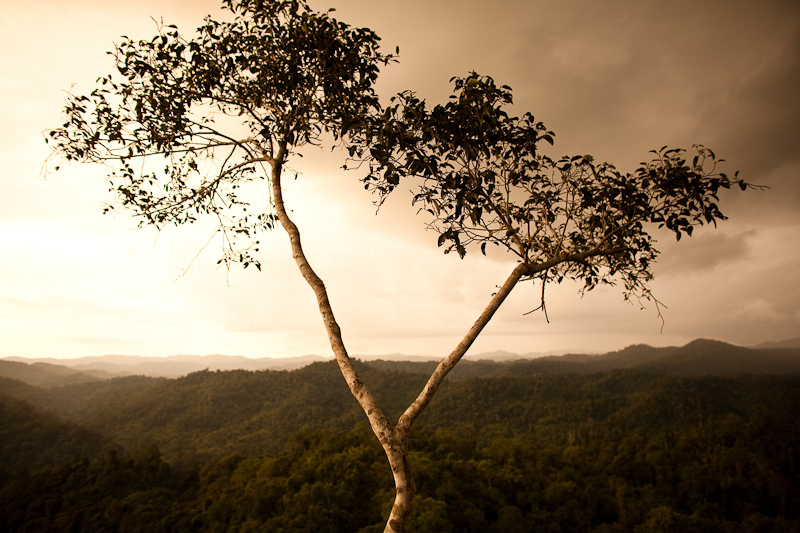
Laura and I actually debated whether we should spend the $500 to do the Gibbon Experience. Two-hundred and fifty bucks a piece. That’s a lot of money, and this close to the end of our trip, we’ve been very aware just how much our supply of it is dwindling.
As far as I know, the project is unique. Twenty years ago, the Hmong people of the region were hunting the Gibbon to extinction and using slash and burn forestry to clear land. But through some innovation and a lot of hard work an organization called Animo stepped in, working with the local people to create something sustainable to replace their short-sighted ways. By constructing a series of treehouses connected by walking trails and zip lines, the Hmong now accommodate hundreds of visitors each year, sharing with these strangers the forest and wildlife that was previously in danger. In fact, they now make more money from the project than they did as hunters, loggers, and farmers. The project is designed to provide as much employment as possible, and the ensuing level of service is quite high, with meals cooked and delivered to each treehouse three times a day.
Getting there isn’t easy. After a two-leg journey by truck and 4×4 into the mountains, we hiked a few kilometres into the jungle just to get to the base camp for the project.
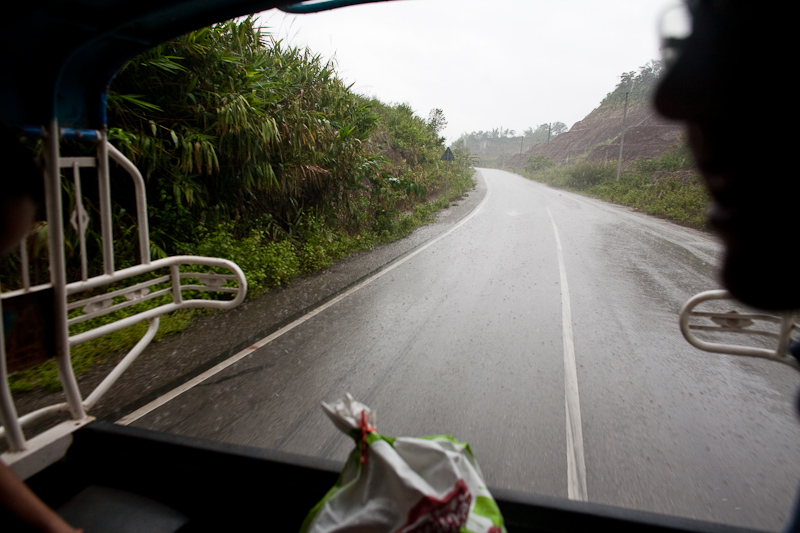
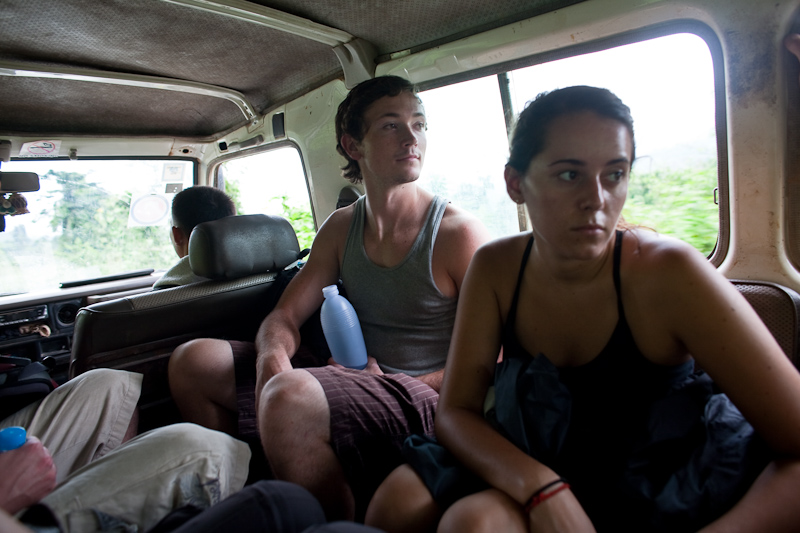
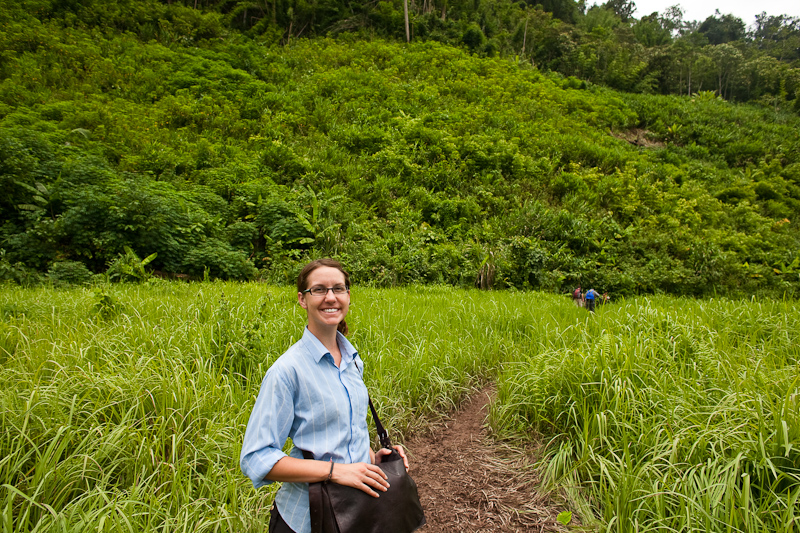
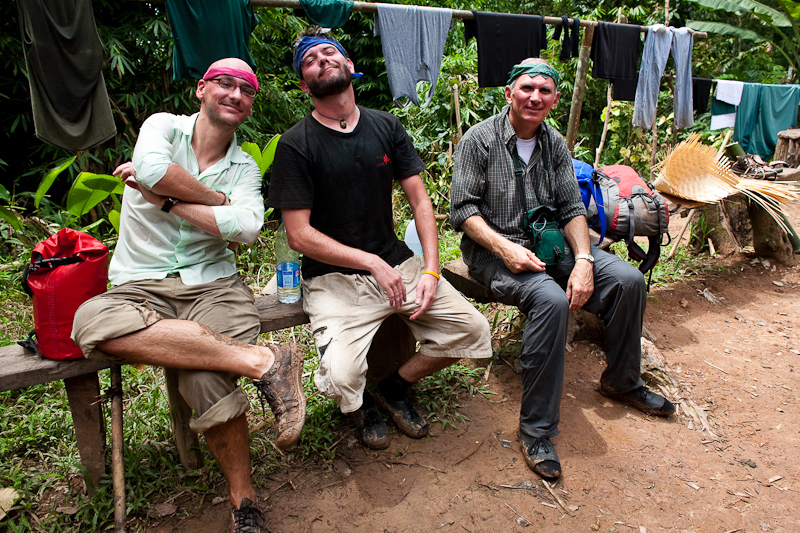
From there, it was a further hike to the first zip line. There are something like twenty or thirty lines altogether, interspersed with walking trails over a distance of probably eight or ten kilometers. The going is pretty slow, as the trail ascends and descends rapidly and is often mired in mud. It reminded us quite a bit of hiking the West Coast Trail on Vancouver Island, Canada. The network includes seven treehouses of various sizes, each complete with potable tap water, showers and toilets that (ahem) drain straight down to the forest floor far below.
Zip-lining (zipping?) is serious fun, although it takes a bit of bravery at first. The lines range in length, from 100 to 500 meters, and are often as high as 150 meters. Just to be clear, that’s the equivalent of a 50-storey building. Yeah, it takes some bravery, not to mention some trust in the equipment and the guides.
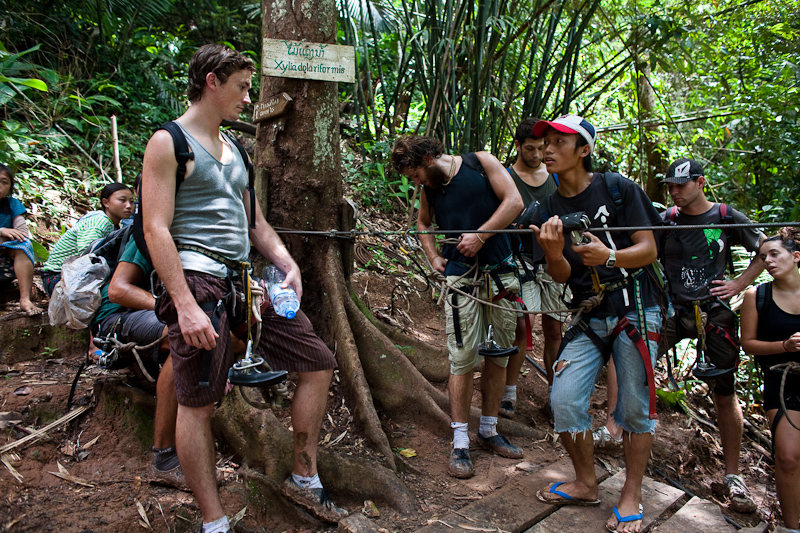
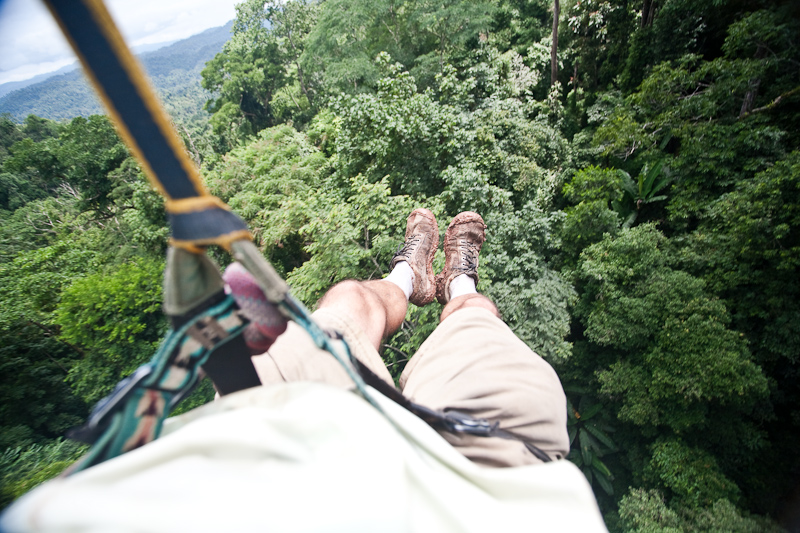
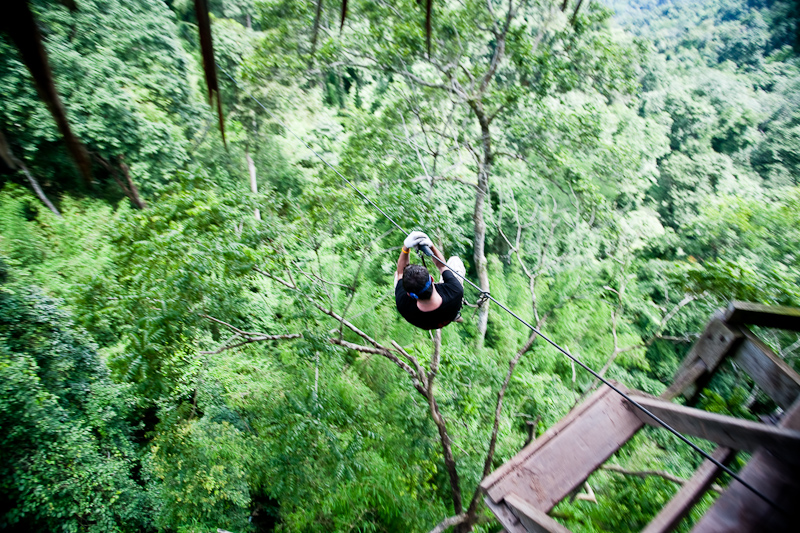
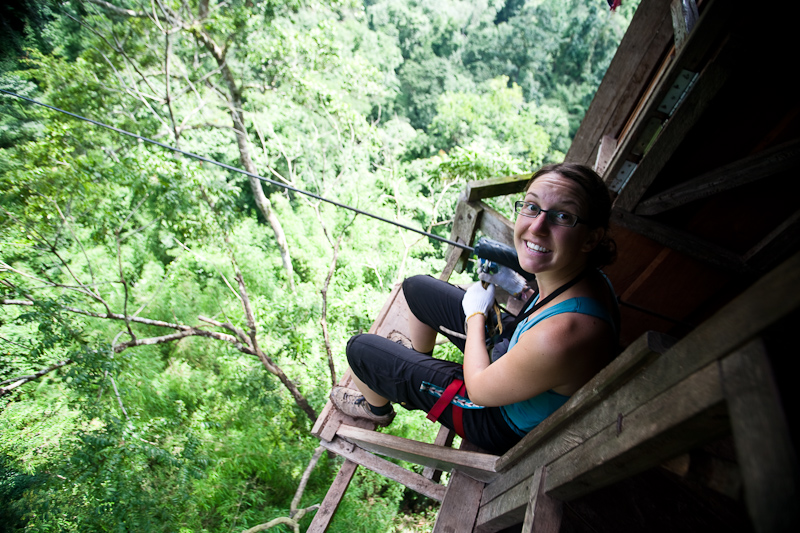
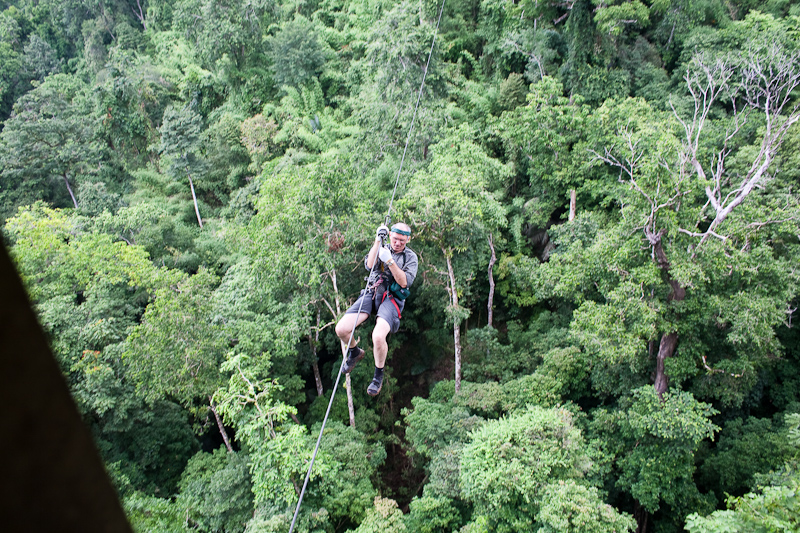
We couldn’t have asked for better roommates in Ben and Ron, either. Long-time cribbage junkies, they were nice enough to teach Laura how to play the game, and Ron and Laura wasted no time in soundly beating Ben and I in our best of three series. Beginner’s luck (and old-timers luck, I guess, hey Ron. heh heh heh).
They were great hiking buddies, and we enjoyed the more relaxed pace and patient attitude they both had as we explored the jungle together. After getting each crew to their treehouses, the guides basically give everyone the freedom to strike out on their own, exploring the network of cables and trails as they wish. With luck we’ll meet up with Ben again when we visit Bangkok before flying home.
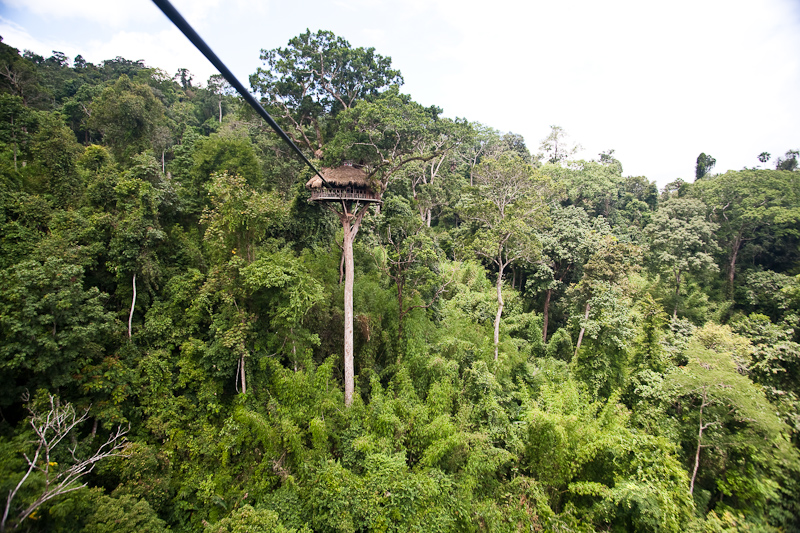
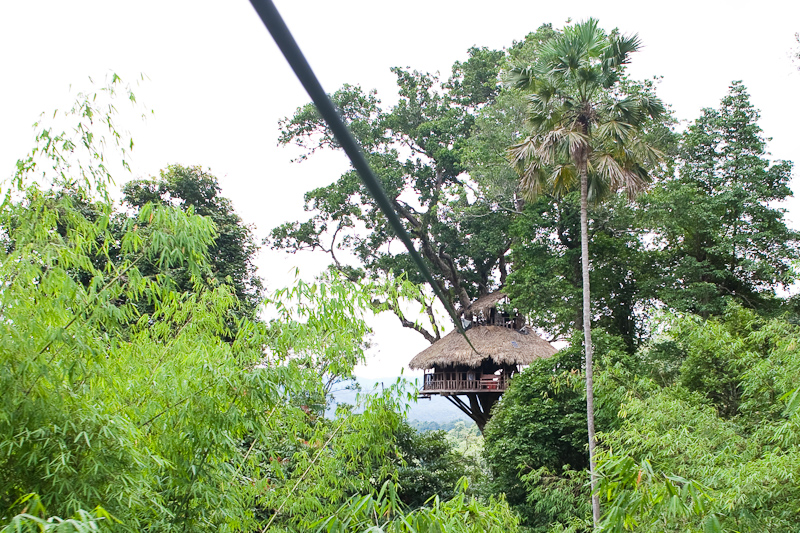
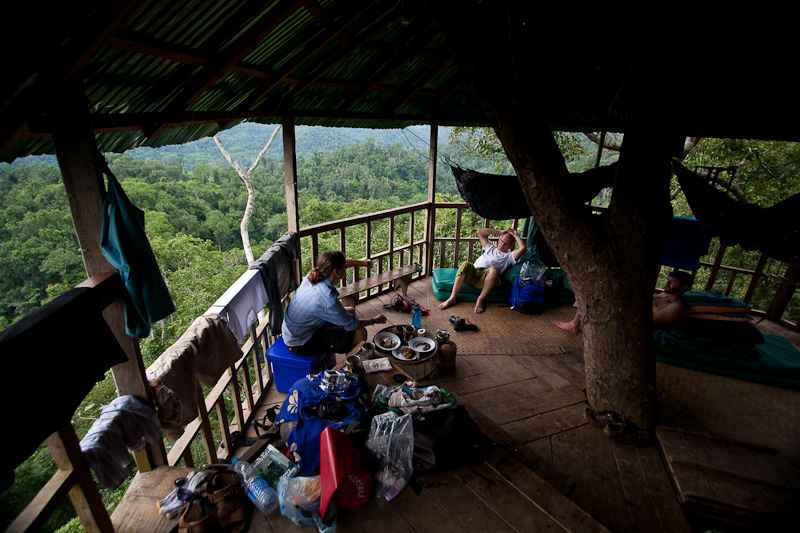
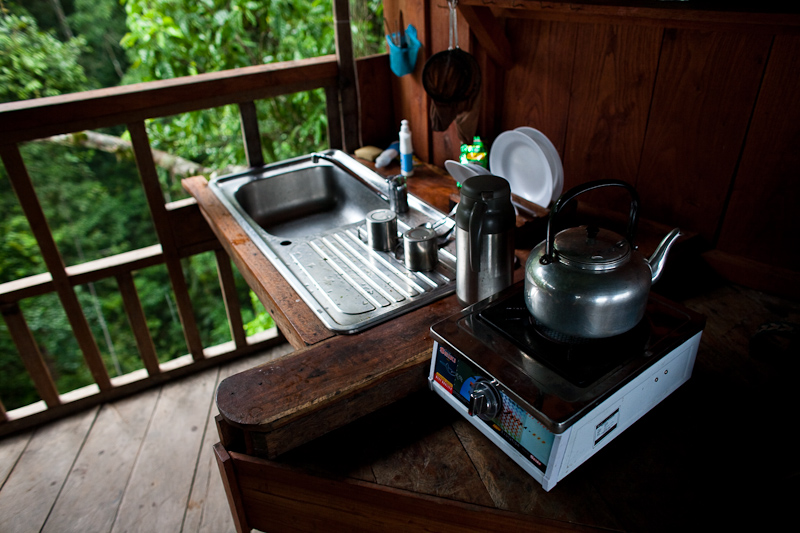
The wildlife we saw was pretty impressive as well. Although spiders as big as your fist are a bit unnerving. We were spoilt on our first evening, seeing a small group of gibbons swinging in the trees far below our treehouse. Unfortunately Ron was in the shower and missed it. This was one of the only two gibbon sightings seen amongst the crew who came out with us, and both were only experienced by the four of us in our treehouse.
On our first morning, we were woken at about 6am by some of the strangest animal sounds I’ve ever heard. We felt the treehouse shake a bit as our guide Va Lee came zipping across to wake us for breakfast. I was the first to emerge out of the black cloth we were employing as a mosquito net, and I asked Va Lee what animal made the escalating whooping cries we could hear.
“Gibbon’s sing,” he said.
The morning mist over the jungle mountains obscured any hope of seeing the animals from the treehouse, but after about twenty minutes, once everyone was up and awake, we decided to hike off the beaten path in search of a gibbon sighting. We zipped across to the main path from the treehouse and then promptly descended down a much muddier hill trail into the woods. Va Lee did eventually bring us to a point where we could see the gibbons through the foliage a few hundred meters away. Laura got a decent look, but all I saw were some rustling trees and faint furry shapes. This would prove to be our last shot at seeing the gibbons, but our little adventure did bring us intimately close to another form of wildlife: jungle leeches!
We all noticed these nasty little pests inching their way across our shoes, and we were picking them off as fast as we could. I was the only one lucky enough to not get one attached to my skin. They start off tiny, like little inch worms, but after juicing up on your blood, can grow to the size of your thumb, or bigger. Laura wins the prize for most hardcore leech attack, easily, after I had to burn one thumb-size bastard off her inner thigh. She was understandably a little shaken up after that. Word to the wise: avoid full-length pants in the jungle; the leeches will climb up your pant leg and attach somewhere closer to home than you wish.
Other wildlife encounters included a 5-6 inch praying mantis, the usual lizards and geckos, tons of beautiful wild butterflies and moths, buzzing cicadas, and a bevy of other insects. Birds strangely kept their distance so we didn’t get any good close looks at them. Laura has some wildlife shots on her camera and I’m sure will post them eventually.

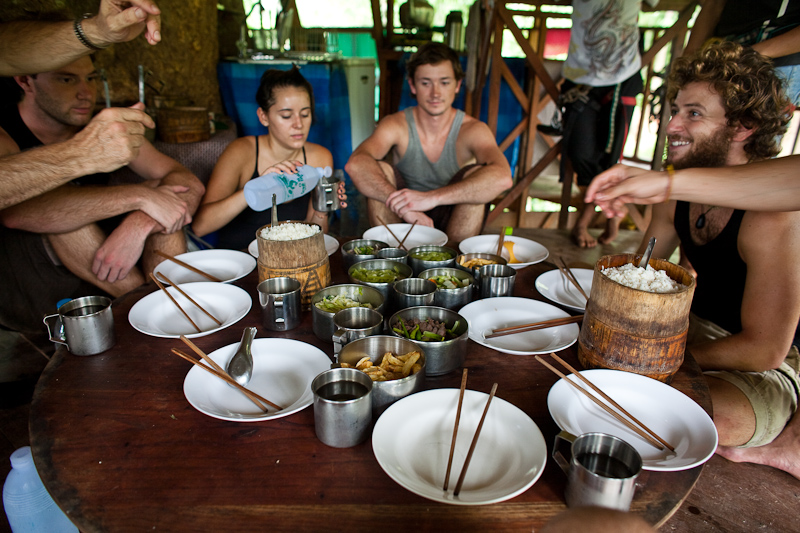
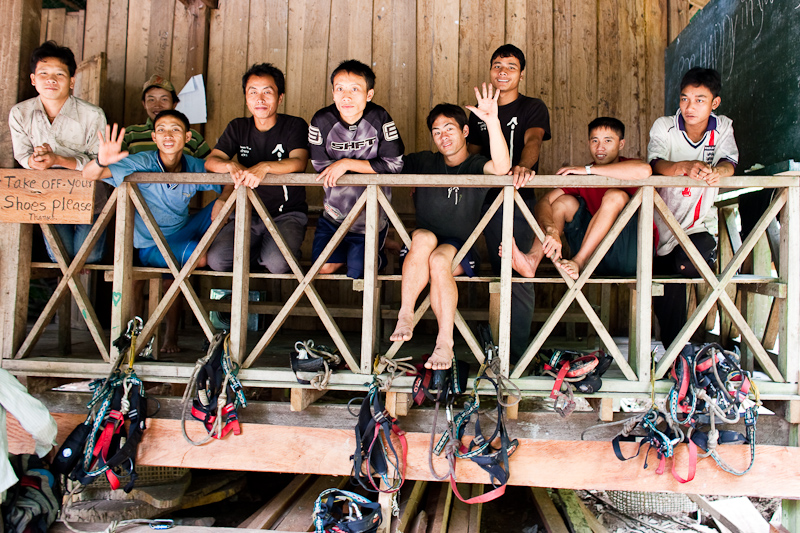
The Gibbon Experience was easily a highlight of our trip. If you make it to Laos, spend the two-hundred and fifty bucks. Don’t even think twice.

Leave a Reply